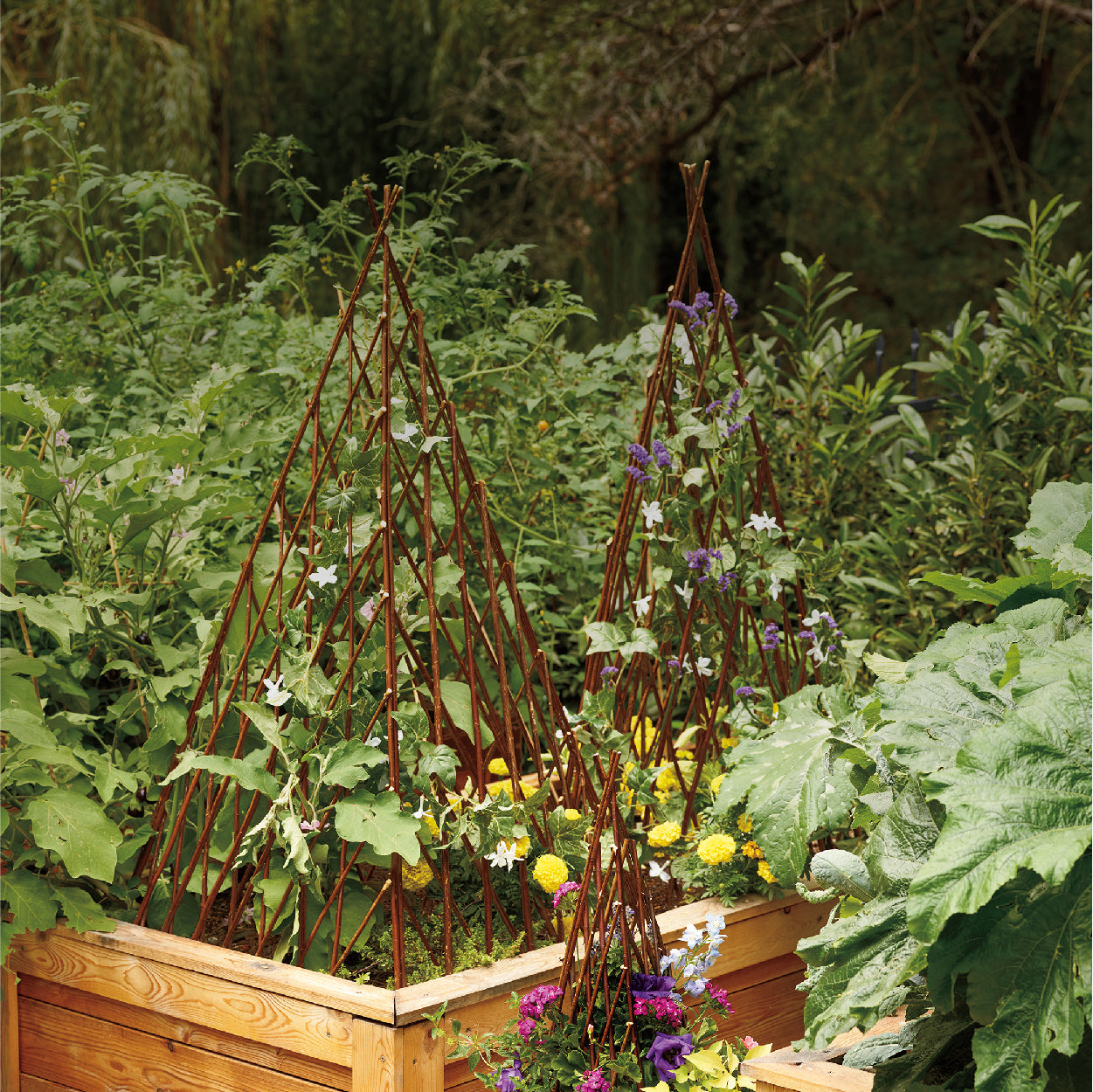Hardy, deciduous North American shrub
Description: Wide-spreading, irregularly-branched shrub with large, compound leaves; deep green leaflets have glaucous undersides and turn striking shades of orange, yellow, and purple in fall; 4-8”, pyramidal flower panicles in summer become clusters of brilliant red, astringent, edible fruits
Habit: Grows 15-25 feet high and spreads via suckers and seedlings into thickets to 30 feet wide
Culture: Prefers full sun to part shade and dry to medium, well-drained soils
Hardiness: Cold hardy to USDA Zone 3
Origin: Eastern North America
Attributes: Attracts birds; Showy fruits; Fall color; Drought tolerant
The wild Staghorn Sumac, native throughout eastern North America, was an early introduction to Europe and was familiar to English herbalist and botanist John Parkinson who called it the “Buckes Horn tree of Virginia” in 1629. The new branches are covered in fine, velvety, reddish-brown hairs similar to the growing antlers of a stag, hence the common name. Native American tribes and settlers found many uses for this plant: the leaves were smoked with tobacco and used to tan leather, and the fruits were steeped in a cooling drink similar in taste to lemonade.
This plant will ship bare root. Approximately 2’ tall.
Bare root planting tips:
~ If you can't plant immediately, store your plant in a cool location and keep the roots moist or pot in a container with a nursery potting mix from your local garden center.
~ Before planting, let the roots soak for several hours as you prepare the site. You'll want to dig a large enough hole so the root mass can spread out and the plant is at the same soil level as when it was growing in the nursery.
~ Once planted, water it in well and wait a month before fertilizing. Mulching will help to maintain moisture and raise soil temperatures for faster growth.
Details
| Genus | Rhus |
|---|---|
| Species | typhina |













